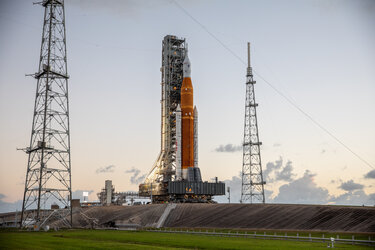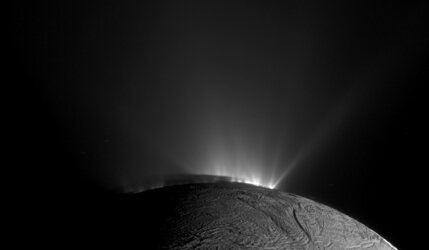Accept all cookies Accept only essential cookies See our Cookie Notice

About ESA
The European Space Agency (ESA) is Europe’s gateway to space. Its mission is to shape the development of Europe’s space capability and ensure that investment in space continues to deliver benefits to the citizens of Europe and the world.
Highlights
ESA - United space in Europe
This is ESA ESA facts Member States & Cooperating States Funding Director General Top management For Member State Delegations European vision European Space Policy ESA & EU Space Councils Responsibility & Sustainability Annual Report Calendar of meetings Corporate newsEstablishments & sites
ESA Headquarters ESA ESTEC ESA ESOC ESA ESRIN ESA EAC ESA ESAC Europe's Spaceport ESA ESEC ESA ECSAT Brussels Office Washington OfficeWorking with ESA
Business with ESA ESA Commercialisation Gateway Law at ESA Careers Cyber resilience at ESA IT at ESA Newsroom Partnerships Merchandising Licence Education Open Space Innovation Platform Integrity and Reporting Administrative Tribunal Health and SafetyMore about ESA
History ESA Historical Archives Exhibitions Publications Art & Culture ESA Merchandise Kids Diversity ESA Brand CentreLatest
Space in Member States
Find out more about space activities in our 23 Member States, and understand how ESA works together with their national agencies, institutions and organisations.
Science & Exploration
Exploring our Solar System and unlocking the secrets of the Universe
Go to topicAstronauts
Missions
Juice Euclid Webb Solar Orbiter BepiColombo Gaia ExoMars Cheops Exoplanet missions More missionsActivities
International Space Station Orion service module Gateway Concordia Caves & Pangaea BenefitsLatest
Space Safety
Protecting life and infrastructure on Earth and in orbit
Go to topicAsteroids
Asteroids and Planetary Defence Asteroid danger explained Flyeye telescope: asteroid detection Hera mission: asteroid deflection Near-Earth Object Coordination CentreSpace junk
About space debris Space debris by the numbers Space Environment Report In space refuelling, refurbishing and removingSafety from space
Clean Space ecodesign Zero Debris Technologies Space for Earth Supporting Sustainable DevelopmentApplications
Using space to benefit citizens and meet future challenges on Earth
Go to topicObserving the Earth
Observing the Earth Future EO Copernicus Meteorology Space for our climate Satellite missionsCommercialisation
ESA Commercialisation Gateway Open Space Innovation Platform Business Incubation ESA Space SolutionsLatest
Enabling & Support
Making space accessible and developing the technologies for the future
Go to topicBuilding missions
Space Engineering and Technology Test centre Laboratories Concurrent Design Facility Preparing for the future Shaping the Future Discovery and Preparation Advanced Concepts TeamSpace transportation
Space Transportation Ariane Vega Space Rider Future space transportation Boost! Europe's Spaceport Launches from Europe's Spaceport from 2012Latest

Rising Earth
Thank you for liking
You have already liked this page, you can only like it once!
NASA’s Orion spacecraft, powered by ESA’s European Service Module, shares a stunning new take on ‘Earth rise’ following the return powered flyby of the Moon.
This image was taken on 5 December, flight day 20, after the spacecraft completed a 3 minute 27 second burn to swing around the Moon and back to Earth.
Just before the burn, Orion made its second and final close approach to the Moon at 17:43 CET (16:43 GMT), passing 130 km above the lunar surface.
The burn, which used the European Service Module’s main engine, changed the velocity of the spacecraft by about 1054 km/h. It was the final major engine burn of the Artemis I mission.
Orion is due to splashdown in the Pacific Ocean on 11 December to complete the 25-day Artemis I mission.
“Orion is heading home!” said NASA administrator Bill Nelson. “The lunar flyby enabled the spacecraft to harness the Moon’s gravity and slingshot it back toward Earth for splashdown. Next up, reentry!”
Sadly, but necessarily, the European Service Module’s contribution to Artemis ends 40 minutes before splashdown. Together with the Crew Module Adapter these elements of the Orion spacecraft will detach from the Crew Module and burn up harmlessly in the atmosphere, leaving Orion on its own for the last crucial minutes to splashdown.
Find Artemis I mission updates and flight day logs on ESA’s Orion blog.
-
CREDIT
NASA -
LICENCE
ESA Standard Licence

Artemis I rocket with Orion and European Service Mod…

Artemis I rocket with Orion and European Service Mod…

Orion splashdown

Artemis I rocket with Orion and European Service Mod…















 Germany
Germany
 Austria
Austria
 Belgium
Belgium
 Denmark
Denmark
 Spain
Spain
 Estonia
Estonia
 Finland
Finland
 France
France
 Greece
Greece
 Hungary
Hungary
 Ireland
Ireland
 Italy
Italy
 Luxembourg
Luxembourg
 Norway
Norway
 The Netherlands
The Netherlands
 Poland
Poland
 Portugal
Portugal
 Czechia
Czechia
 Romania
Romania
 United Kingdom
United Kingdom
 Slovenia
Slovenia
 Sweden
Sweden
 Switzerland
Switzerland
























